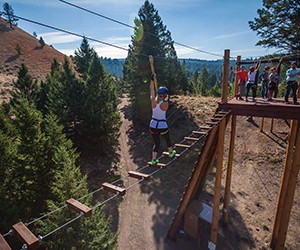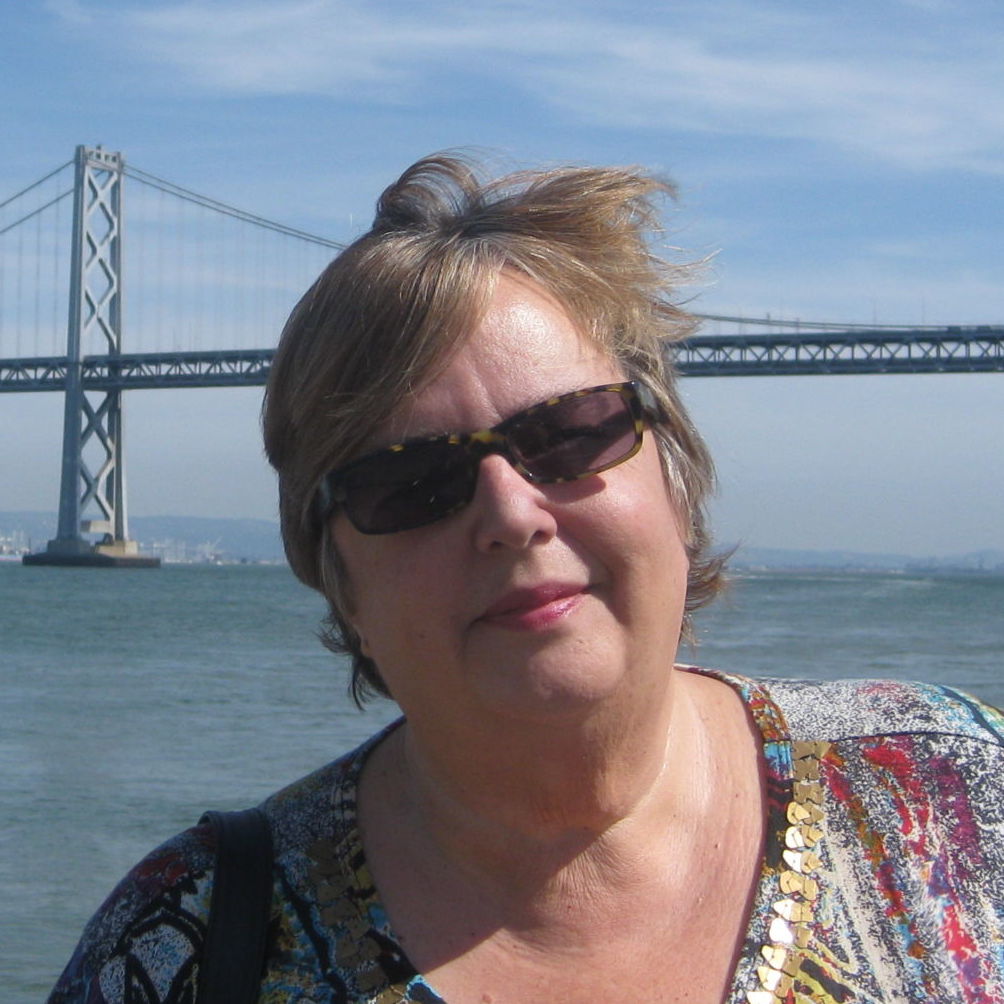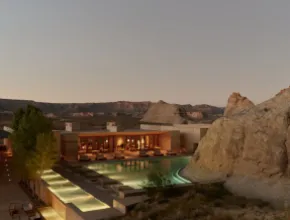If the term “all-inclusive” conjures up images of a no-frills experience or a property where the food is bland and the amenities are basic, it’s time to get up to speed on just how much the segment has evolved. Today’s all-inclusive packages are found everywhere from posh guest ranches to elegant residential-style properties and deluxe resorts, most offering customized experiences that are anything but generic.
Mark Cooper, CEO of IACC, whose conference center members have long been known for the CMP (Complete Meeting Package) approach to meetings, said he sees two major trends guiding the all-inclusive segment.
“One is that the traditional meeting package has evolved and changed to become more flexible and include more experiential options,” he said. “The other is the growth of all-inclusive packages where absolutely everything on the property is included, which is very exciting. It’s about creating a complete experience that helps facilitate a great meeting.”
Debra Edwards, vice president of group meeting and incentive sales for Marival Group, which manages three upscale all-inclusive resorts in Nuevo Vallarta and Punta de Mita, Mexico, also sees an evolution.
“It’s clearly not your grandma’s all-inclusive anymore,” she said. “People think all-inclusives are all about a cattle-car experience. The reality is that it has become much more high-end and varied.”
New and Improved
Marival’s Mexico properties illustrate just how deluxe and diverse the all-inclusive product has become. They include the 497-room Marival Resort and Suites, a full-scale resort with a large conference center; the intimate Marival Residences, which features penthouse suites with private plunge pools; and the 48-unit Rancho Banderas All-Suite Resort, which is expanding with 300 rooms and a 12,000-square-foot conference center next year.
Long established in the leisure market, meetings and incentives are a relatively new focus for Marival, according to Edwards, who says the incentive market has been especially receptive.
“It’s a fairly new concept for them, with younger planners especially receptive to it as they don’t tend to have preconceived notions about all-inclusives,” she said. “What is really new is the option of staying at a residential-style property like Marival Residences, where accommodations start at 1,400 square feet and groups can easily take over the resort.”
Also seeing more interest in all-inclusives among meeting planners is Tracey Welsh, general manager of Red Mountain Resort & Spa in Ivins, Utah, where about 70 percent of groups choose an all-inclusive approach. At the same time, she sees more demand for unique experiences to be included in the packages.
“Planners like the fact that the all-inclusive takes some of the heavy lifting out of the planning process, especially at an adventure/wellness facility like ours, where it’s difficult to navigate all the options,” she said. “Planners are also testing us to be more creative, to offer something different from the last time they met.”
PageBreak
Millennial Impact
Among the most significant trends is the increasingly diverse nature of the all-inclusive approach, with many going beyond the typical room, meals and meeting space package to include a wide range of immersive experiences. Driving the trend is the growing presence of Millennial attendees, according to Troy Hedenskog, group sales manager for The Ranch at Rock Creek, an upscale property in Philipsburg, Mont.
“With Millennials, we’re seeing a move toward experiential retreats—they’re not content to just sit on the beach,” he said. “They are stimulated by individual challenges like learning to fly-fish or helping others through a ropes course. One client asked us for a community service project that involved cleaning up the creek area for a healthy fish habitat.”
Also noting the trend is Sherrie Fitzgerald, director of sales and marketing for the Alisal Guest Ranch & Resort in Solvang, Calif., an all-inclusive property that does a lot of group business with financial investment firms, where the average age of attendees is between 25 and 35.
“Teambuilding, which is big with young groups, is really coming back in popularity,” she said. “These groups also want creative and healthy food. You have to be open and flexible about what they want.”
Dining Diversity
While all-inclusive packaging usually means that all or most meals will be served on-property, many resorts strive to keep dining experiences varied and exciting for groups. According to Edwards, perceptions that all-inclusive means relegating groups to “one big dining hall” are erroneous.
“It has evolved into truly superior food and beverage service,” she said. “You will find specialized food stations where chefs personally prepare fresh fish or other items to your specification.”
Andy Finn, vice president of sales for Benchmark Hospitality, which has numerous properties offering the CMP, agreed, adding that chefs strive to provide experiences equal to those the group would have if going off-property to various restaurants.
“Culinarians really have to be creative and different. What you don’t want is someone on a package eating the same old, same old for dinner every night,” he said. “You serve the basics, but spice it up a bit, especially at dinner and lunch.”
Flex Time
In another trend, all-inclusive packages are growing ever-more flexible, even offering the ability to bring in a la carte elements that attendees pay for on their own, according to Edwards.
“There are cases where customers want people to pay for their own rooms during the meeting, and we can set this up,” Edwards said. “In other cases, they may want the attendees to pay for their rooms during a pre- or post-meeting stay. We can set up a registration link for additional nights and people pay with their own cards.”
Fitzgerald added that all-inclusive packages at Alisal Guest Ranch & Resort are fully customizable.
“For instance, if a sponsor wants to do an activity or event for the group, we can pull that out and bill it to the sponsor,” she said. “We listen to the group’s needs and we don’t say no.”







